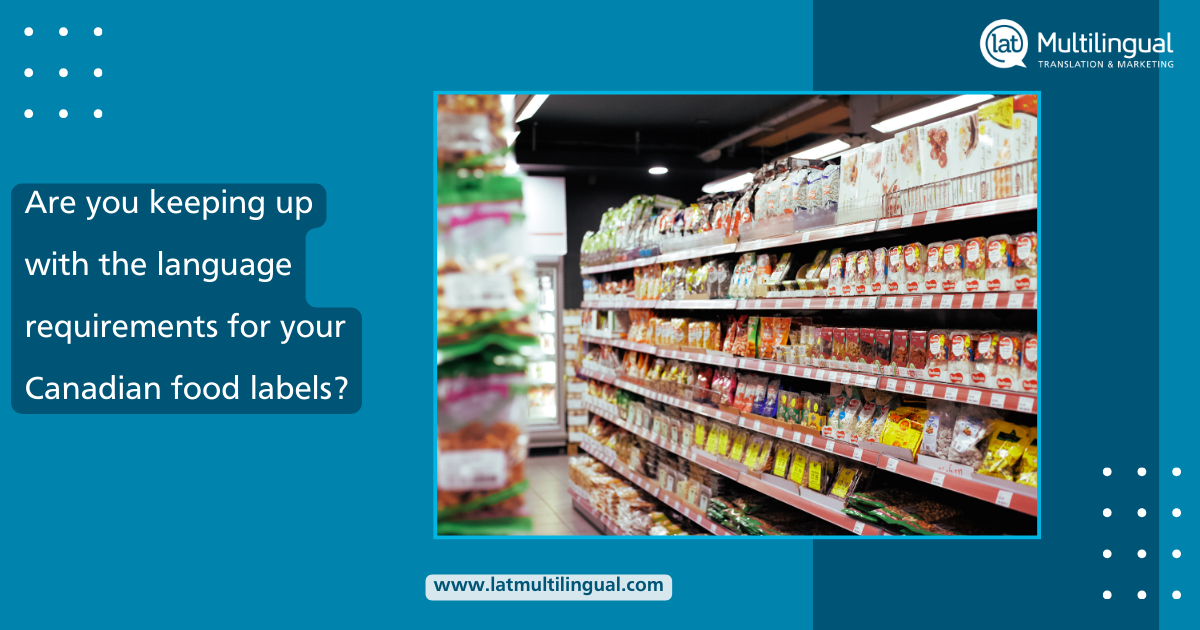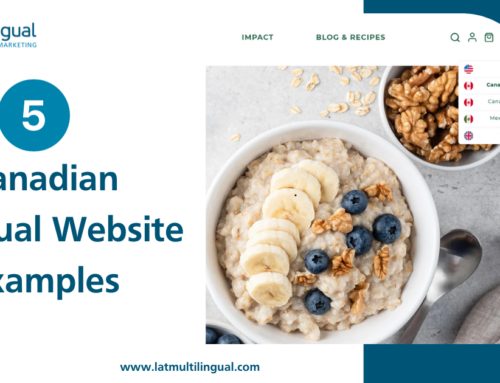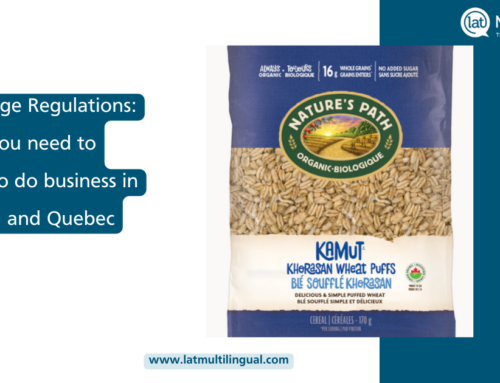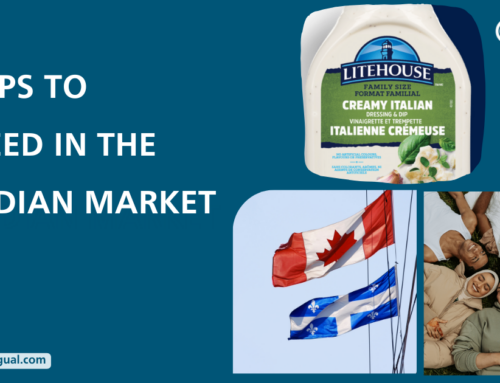Canadian Food Labels
It has been almost six years since Health Canada announced new regulations for food label laws in Canada. As we approach the December 2023 deadline for the Canadian Food Inspection Agency (CFIA) to confirm industry compliance with these changes, food label regulations remain as important as ever for businesses.
Health Canada and the CFIA jointly regulate food label law. The three most essential laws related to food labels are the Food and Drugs Act, Food and Drugs Regulations, and Safe Food for Canadians Regulations. The Food and Drugs Act prohibits misleading labelling, the Food and Drugs Regulations delineate mandatory nutritional and ingredient labelling (which must be provided in both official languages), and the Safe Food for Canadians Regulations concern food inspection.
Food labels consist of two primary components: the nutritional information or “Nutrition Facts” table and the ingredient list. Prepackaged food in Canada must have nutritional labels, ingredient lists, and all other written content on product packaging in both English and French.
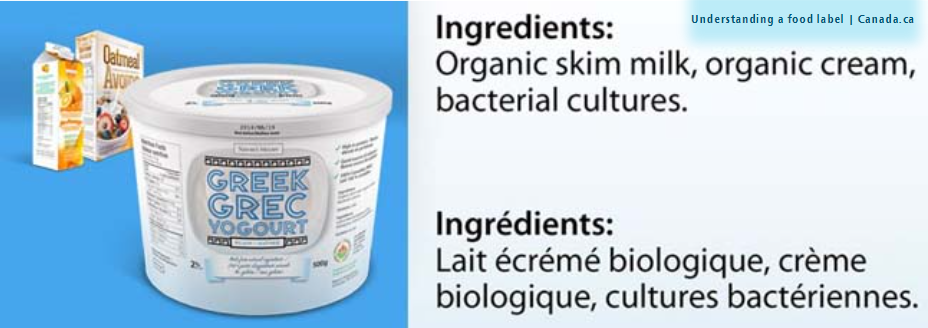
All Nutrition Facts tables must include serving size, calories, % Daily Value (% DV), and 12 core nutrients. Food labels have this information appear in both English and French in the same table. French cognates, or words that are identical in English and French, appear only once, such as sodium, potassium, and calcium.
The ingredient list sorts all ingredients in descending order, with those that exist in larger quantities appearing at the beginning. Businesses must identify any allergens, gluten, and added sulphites in the ingredients, including those that may exist through cross-contamination. This information must appear in both languages.
Timeline of Canadian Food Labelling Industry Requirements
Nutrition labelling has been mandatory for all prepackaged food since December 2007.
In 2008, the government required labels to distinguish between foods processed locally and foreignly. Manufacturers who process their food locally but with foreign ingredients must disclose this information on the label. Businesses can only legally deem their products to be “made in Canada” if over 50% of its production took place in the country.

From 2017 to 2021, the CFIA initiated a five-year project to improve consistency and comprehension between food labels on different products.
As of July 2022, Health Canada implemented changes to front-of-package food labelling. These changes mandate the use of symbols on the front of labels to indicate high concentrations of saturated fat, sugar, and sodium. This front-of-package symbol consists of a magnifying glass and a list of which of the three nutrients occurs in high quantities. The symbol’s size and location depend on the product label’s size and shape and must list the nutrients in both English and French. Businesses have the choice of either printing one label in both languages or printing two separate labels with one in each language. These symbols must appear on the front of and at the top of a food label.
Health Canada implemented this change in response to concerns over the damaging health effects of excess saturated fat, sugar, and sodium. Products to include this symbol will be those with 15% or more DV of these nutrients, those with a small reference amount with 10% or more DV of these nutrients, and 200g or larger products with 30% or more DV of these nutrients. Certain foods are exempt from this symbol requirement due to special criteria, including dairy products that are high in calcium. Health Canada has granted the food industry until January 1, 2026, to implement this change.
Managing Bilingual Requirements on Canadian Labels
With limited-label real estate, food companies must strategically translate text to meet bilingual language requirements as concisely as possible. Although not mandatory in English provinces, we highly recommend ensuring that English and French text on labels are the same size to meet Quebec requirements.
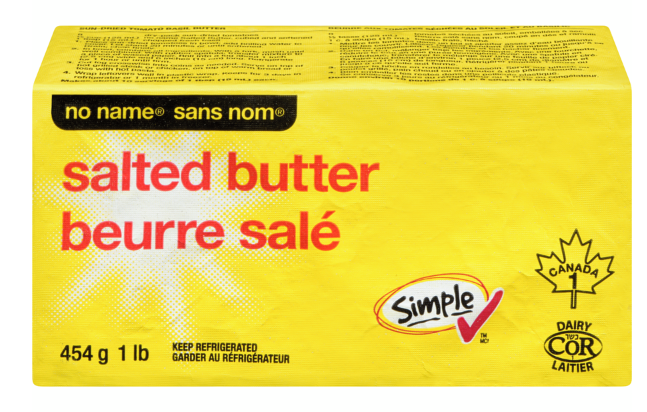
Ensuring your food product packaging meets Health Canada’s guidelines is crucial in such a competitive industry. Brands can set themselves up for success with a solid and strategic approach to their bilingual marketing and labelling efforts.
Large retailers often enforce bilingual packaging laws, and failure to comply can be costly. Businesses need to be sure they comply with the mandatory requirements to succeed in the Canadian market, including Quebec, where more than 7 million customers speak primarily French. With well-adapted labels, your brand will be positioned to adopt a bilingual marketing approach that will ensure essential product nuances are captured and delivered to Canada’s English and French audiences.
Continue reading below for a list of frequently asked questions related to Canadian food labels.
FAQ
Q: Can you sell products in Canada without French?
A: To sell your food product in Canada, your label must include both English and French text. The only items on your label that do not require translation are trademarked information like your product’s name or registered slogan.
Q: What are the rules for labels in Canada?
A: All food labels must include a Nutrition Facts table and ingredients list. All Nutrition Facts tables must include serving size, calories, % Daily Value (% DV), and 12 core nutrients. Businesses must identify any allergens, gluten, and added sulphites in the ingredients, including those that may exist through cross-contamination. Quantities need to be converted to Canada’s metric system.
Q: Do labels in Canada have to be bilingual?
A: Yes, almost all labels in Canada have to be bilingual. A few exceptions to bilingual food label requirements in Canada include labels for specialty foods, local foods, and test market foods.
Q: What 4 foods do not require a nutrition label?
A: The only foods that do not require a nutrition label in Canada are fresh fruits and vegetables; raw meat, poultry, and seafood; foods prepared in-store; foods with minimal nutrients; and alcoholic beverages.

